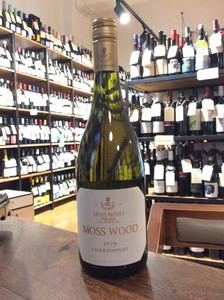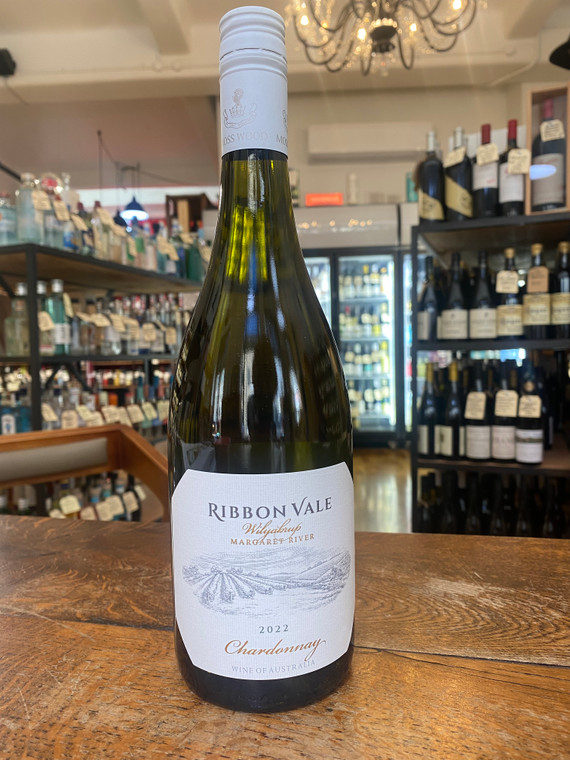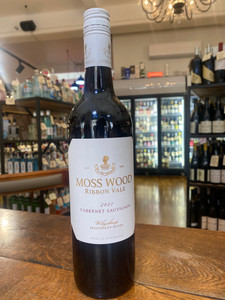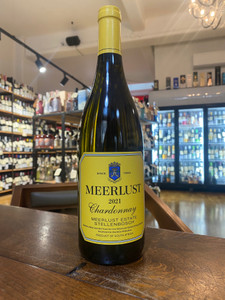
VINTAGE NOTES
2022 Ribbon Vale
The 2021-2022 growing season was one of contrasts. If wet weather is your thing, then calendar year 2021 was the year for you. Moss Wood received 1440mm of rain, more than 40% above average. We understand that we live in a relatively well-watered place but this was approaching the ridiculous. That said, it’s probably a bit weak of us to complain given the very trying conditions experienced during the recent heavy rains and accompanying floods experienced in south eastern Australia. Our slightly boggy vineyards were insignificant by comparison.
As winter turned to spring, cool, damp conditions continued to prevail right up to flowering, which was about a week late. However, any concerns we had about the impact of inclement weather were quickly resolved when Mother Nature threw the switch to dry and the contrast began. Having received 1417mm rain to end of October, only 23mm fell for the rest of the year.
Temperatures remained mild until the end of December which meant there were some cool nights. During the Chardonnay flowering, the mercury dropped below 8°C on 6 occasions, so conditions were relatively benign. Both varieties recorded near average bunch weights.
The contrast went even further by Christmas. We enjoyed nice warm days through December but nothing particularly hot. On 25th December our maximum reached 37.6°C and then on Boxing Day, we had our warmest day since 25th February 1985, when we topped out at 41.2°C. The heat then eased until mid-January, when we had another warm one of 40.1°C on 19th but that signalled the end of the really warm weather. From this point, we rolled into vintage enjoying warm clear days, with virtually no rain to interrupt things.
Despite the 2 bursts of heat, ripening was slow and steady and harvest dates were slightly behind average, Chardonnay came off on 17th March.
Our winemaking techniques for these wines continue to evolve. In 2022, as with Moss Wood Semillon, both musts were clarified using flotation as opposed to cold settling. In speeding things up, apart from significantly reducing our energy usage, this also reduces some of the oxidation associated with having juice waiting in tank for several days. The net result is increased fruit freshness at the time of clarification and then stronger aromas in the finished wines.
It could be said that at Moss Wood we’re innovative traditionalists. It sounds contradictory but by this we mean we’re happy to embrace new technologies, in both the vineyard and the winery, wherever we see a quality advantage over our traditional approach. This meant, for example, when the research showed the clear quality benefits provided by the improved vine canopy of the Scott Henry trellis, we converted all our vineyards to that system. In contrast, hand-plunging of small-batch, open fermenters continues to be the best process for extracting colour and flavour in red wines and it dates all the way back to our first vintage of Moss Wood Cabernet Sauvignon in 1973. Nothing better has come along to replace it. Returning to the point, flotation is not a new technology but until recently, it had only been a large-batch operation and suitable equipment was not available for small wineries. That has now changed and we’ve happily embraced it.
For Ribbon Vale Chardonnay, our style requirement is somewhat clearer because we’ve accrued so much experience with Moss Wood. At the same time, we’re still learning because the two vineyards are quite different and not all the historical knowledge is easily applied. Nevertheless, our preference is for chardonnay’s riper fruit spectrum, with the emphasis on stone fruit and nuts and this occurs at just over 13% alcohol equivalent, which is similar to Moss Wood but here’s a curious thing. Despite the vineyards being only one kilometre apart, Ribbon Vale ripens roughly 2 weeks later. This, of course, makes it just that bit more challenging, while we wait and watch the weather, hoping things stay fine.
PRODUCTION NOTES
Both varieties were hand-picked and delivered to the winery, where the technique was the same for both wines. The fruit was sorted and whole-bunch pressed and the juice was then clarified and seeded with multiple yeast strains for primary fermentation, which commenced in stainless steel tanks, where temperatures were controlled to a maximum of 20°C. At the halfway stage, when the process has slowed, the fermenting must was transferred to barrel and allowed to finish at ambient. All the barrels were 228 litre French oak.
With the 2022 Ribbon Vale Chardonnay, we pushed the new oak component up to 50%. The reason is quite simple. It was clear very early on that the intensity of the fruit aromas was much stronger in ’22 and we felt the wine would carry more new oak without being dominated and are delighted with the result.
Both wines went through full malolactic fermentation and once completed, each batch was blended, dosed with sulphur dioxide and returned barrel.Oak aging continued until 3rd January 2023, 9 months in total, when both wines were racked and blended in stainless steel tanks. Fining trials were carried out to see if we could improve the tannin balance in the wines but none of the treatments offered improvement. They were then fined with bentonite for protein stability, cold stabilized and sterile filtered and bottled on 13th January 2023.
TASTING NOTES
COLOUR AND CONDITION:
Light to medium straw hue, with green tints; bright condition.
NOSE:
A nose with a broad array of aromas, including prunes, nectarine, musk, limes, marmalade, roast nuts, vanilla ice-cream and toasty oak. Quite the combination!
PALATE:
The palate is immediately generous, with full body underpinning flavours of limes, peach, apricot and caramel. There is good length and fresh acidity that ensures a zesty lift. The finish has soft tannins and a touch of toasty oak.
CELLARING:
At this stage of the discussion, it’s always a dilemma resolving exactly how long a Chardonnay must be cellared for. Our point is the wine has terrific youthful balance and generosity and can be enjoyed now. However, it will certainly age well but will need at least a decade to show its bottle bouquet. When it does the nose will add layers of buttered toast and the structure of the palate will soften, making it much rounder and even more generous.








